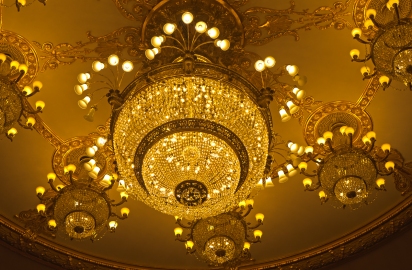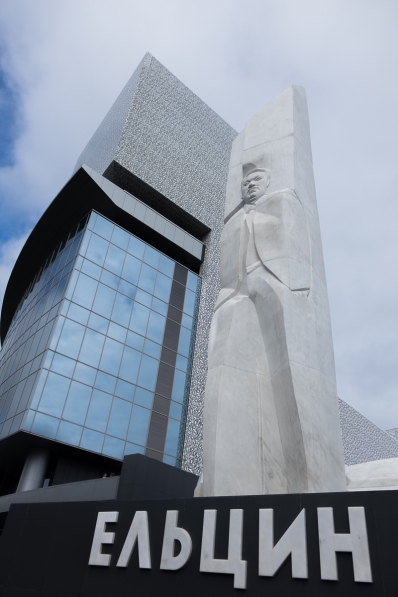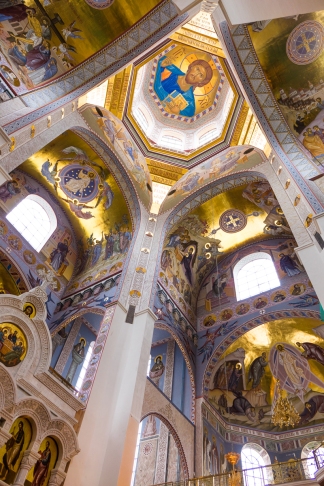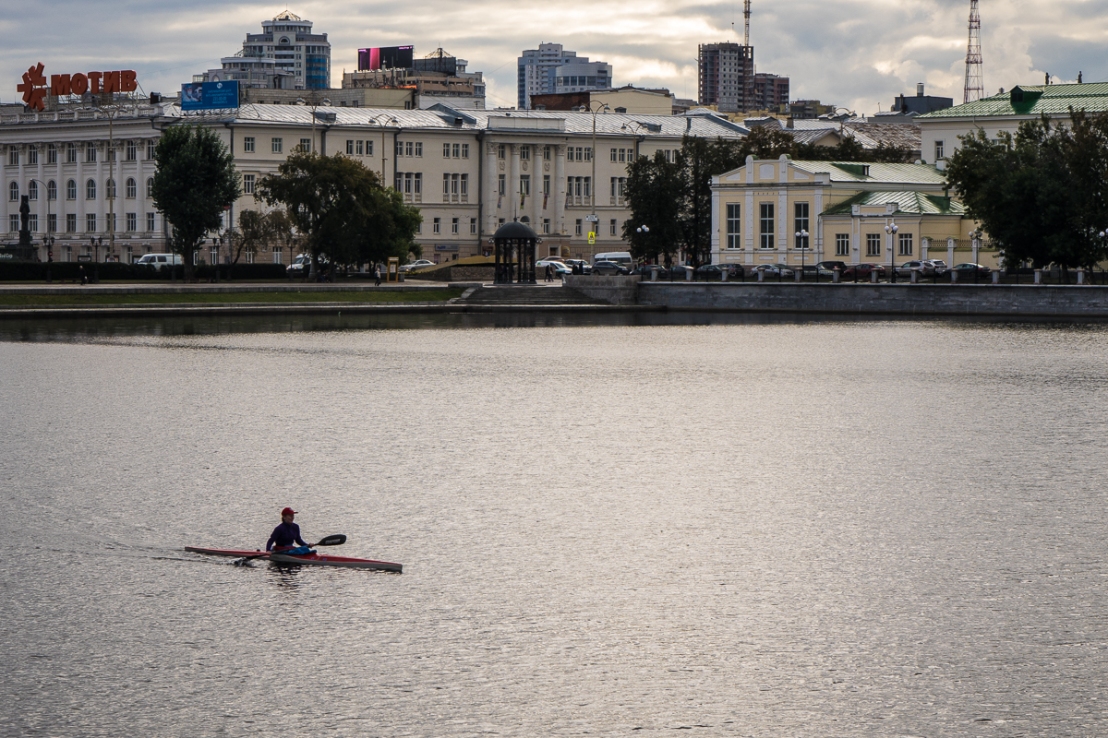Last month, I made my first visit to Russia, and on a first look, Ekaterinburg could be any European city. There are shops, cafés, banks, office blocks, advertising hoardings, people going about their business, dressed in sensible warm clothing against the chilly autumn weather. The most immediately obvious difference from what I’m used to is the prosaic fact that everything is in cyrillic script.

There are differences in culture and architecture, of course: the glitter of golden onion domes from many of the churches, the Wedgwood-china plasterwork of the Sevastyanov House. And there is a lot of land: Sverdlovsk province has a population of 4.3m the size of (half the population of London) in a land mass of 194,800 km² (nearly as large as the whole of Great Britain). The result is a preponderance of wide boulevards and generous green spaces – albeit not at their best in grey-skied drizzle of early autumn, before the trees have turned properly to gold. Ekaterinburg is a steel town, and those wide boulevards are well used by a lot of cars, with seemingly less congestion than that number would cause in an older, narrow-streeted European city.
There are, however, visible signs that all is not well with the economy. I saw two building sites, one of them huge, where work simply seemed to have stopped altogether, presumably from lack of funds, their giant cranes simply sitting there. The city’s trams look like they haven’t been replaced in many decades, and the cars are notably older than I’m used to. There’s virtually no sign of Russian-made vehicles. There are some fine looking shops, but nothing approaching the retail density that I’d expect in the centre of a Western European city (to be fair, this might be because the retail has all migrated to shopping malls that I didn’t see).

One institution was definitely thriving, which was the Ekaterinburg State Academic Opera and Ballet Theatre, my hosts (who paid for my trip). They seemed to be at the centre of things in a way that’s unthinkable for an opera company back home: Thaddeus Strassberger, the American director of the opera I saw, was bowled over by the fact that the lead up to the production received significant news coverage and that random strangers in the shops knew who he was. Wages are low for singers – a third, I was told, of their equivalents in Moscow, I was told – so the theatre has a large roster of singers under contract. The evidence of my ears says that the quality is consistently very high; the equivalent singers in Western Europe would undoubtedly be travelling from their homes to get the best work; job mobility is presumably lower here.
Russia isn’t really making a big effort to welcome international tourists. The visa process works well enough, but is demanding and inflexible – for example, as a company director, I was required to submit three months worth of personal bank statements and a list of all countries travelled to in the last ten years, and to specify precise travel dates and address in Russia. Immigration officials don’t speak anything other than Russian (or don’t admit to it, anyway) and airport signage is erratic. Ekaterinburg doesn’t feel as if many foreigners go there. Even figuring out its latinised name is confusing: the cyrillic Е is pronounced “ye”, so it’s fairly random as to whether it gets spelt “Ekaterinburg” or “Yekaterinburg” (the cyrillic letter for an “e” sound as in “Edward” is “Э”). There are, however, plenty of visitors from elsewhere in Russia, with two notable historical sites.

Sverdlovsk province is the birthplace of Boris Yeltsin, and Ekaterinburg contains the Yeltsin Presidential Center, modelled on the concept of Presidential Centers in the US. Behind the massive statue of Yeltsin and the very up-to-the-minute (and somewhat overpowering) multimedia displays lurk some fascinating artefacts: for any child of the cold war who lived a teenage-hood in fear of a nuclear holocaust, it’s quite a jolt to see the suitcase with the nuclear trigger that was handed from Yeltsin to Putin on 31st December 1999. Yeltsin’s handwritten letter of resignation to Gorbachev is also on display – or, at least, Yeltsin’s personal copy.
The Ipatiev House in Ekaterinburg was the site of the murder of the last Tsar, Nicholas II, and his family. The house was destroyed in 1977 (on Yeltsin’s orders), but after the Romanovs’ controversial canonisation in 2000, it was decided to build a church on the site: this is now the “Church on Blood in Honour of All Saints Resplendent in the Russian Land” (or, more commonly, the “Church on the Blood”). It’s a bizarre place to Western eyes: we are well used to seeing the Romanovs in standard fin-de-siècle garb, so seeing them transplanted into ancient Orthodox iconography, with its robes and massive gold backgrounds, strikes a strange note.
 Both the Yeltsin Center and the Church on the Blood are more notable for the things they don’t say than for the things they do. The Yeltsin Center is conspicuously free of vodka bottles or references to his handling of privatisation and the subsequent rise of the oligarchs: the hagiography of the man as the proud standard bearer of the long march to freedom must not be disturbed. The Church on the Blood is equally free of references to the fact that Nicholas was a weak tsar who repeatedly failed to take action that could have reformed his country and avoided the revolution and the subsequent Soviet rule. Neither site shows any intention to give a nuanced view of complex events, and talking to Russians confirms that such a view is not what they are taught in school (not, I hasten to add, that we in Britain can hold ourselves up as models of this).
Both the Yeltsin Center and the Church on the Blood are more notable for the things they don’t say than for the things they do. The Yeltsin Center is conspicuously free of vodka bottles or references to his handling of privatisation and the subsequent rise of the oligarchs: the hagiography of the man as the proud standard bearer of the long march to freedom must not be disturbed. The Church on the Blood is equally free of references to the fact that Nicholas was a weak tsar who repeatedly failed to take action that could have reformed his country and avoided the revolution and the subsequent Soviet rule. Neither site shows any intention to give a nuanced view of complex events, and talking to Russians confirms that such a view is not what they are taught in school (not, I hasten to add, that we in Britain can hold ourselves up as models of this).
But while it may not be an obvious place to visit, the city looks very liveable. The picture of a lone kayaker on the river Iset will stay with me as an image of a calm in a bustling, industrial city.

And here are just a few more pictures:
Lovely photos!
LikeLike